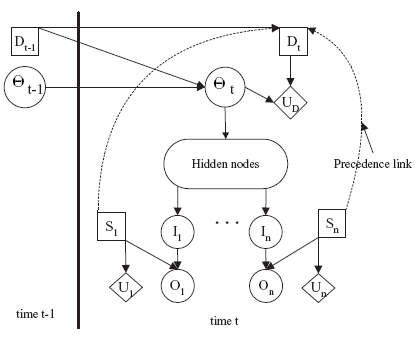|
|
|
|
|
|
|
Active Information Fusion |
Active Information Fusion with Dynamic Influence Diagrams We propose a decision-theoretic framework based on
influence diagrams to model active fusion for timely decision-making. Such a
model yields several advantages. First, it provides a coherent and fully
unified hierarchical proba- bilistic framework for representation, integration,
and inference of uncertain sensory information from multiple modalities at
different levels of abstraction. Second, it embeds both the sensors'
contributions to decision-making and their operating cost in one framework,
allowing to choose the sensor set with the optimal tradeoff, by exploiting
utility theory, probability theory, and information theory. Third, it
incorporates the evolution of the fusion goals, and accounts for the temporal
aspects of decision-making with a dynamic structure. Under the framework,
timely and effective decisions can be made by dynamic inferencing using a
selective set of sensors that has the optimal tradeoff between its cost and
benefit.

The structure of the dynamic ID model is illustrated in the above. The top theta node indicates the hypothesis variable regarding the target we want to access. It can also be generalized to indicate a set of hypothesis variables. Each bottom node Oi (called observation node, or O node) indicates the possible observations from each sensor. Each node Ii (called information node or I node) associated with Oi represents the sensory information measured by Oi, and the link between them reflects the reliability of sensor measurement. The big ellipse indicates all the chance nodes between the information nodes and the hypthesis node. These nodes are collectively called hidden nodes. They model the probabilistic relationships between the theta node and the information nodes at different abstraction levels.
|
Introduction
|
|
Summary
|
|
Demos
|
|
Publications
|
|
BN
Resources
|
|
|
|
|
